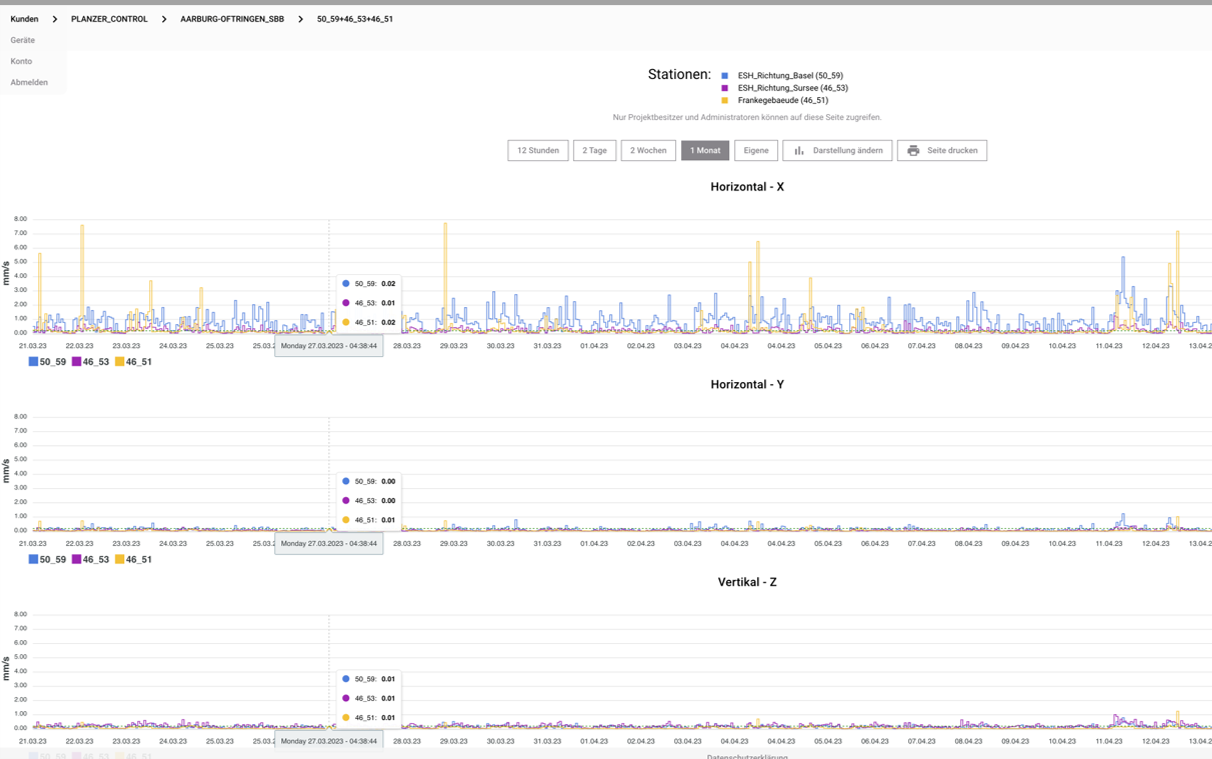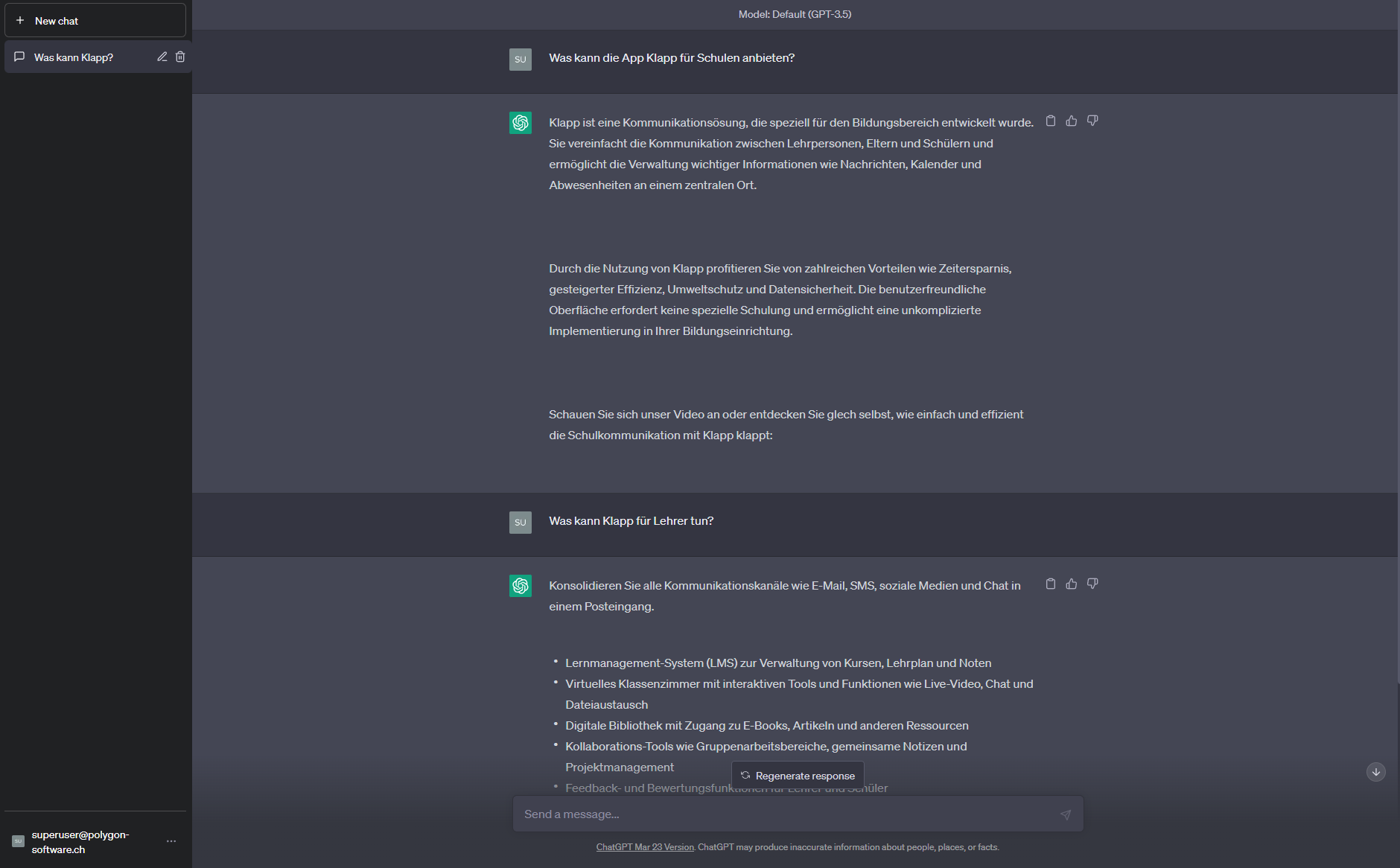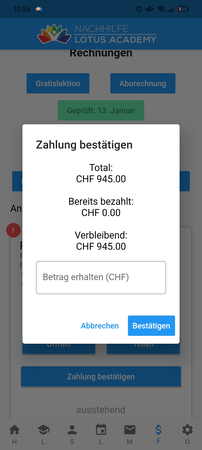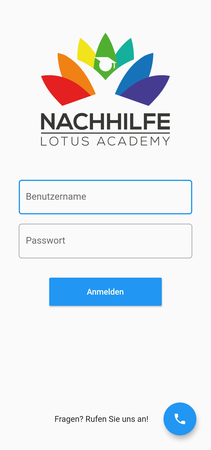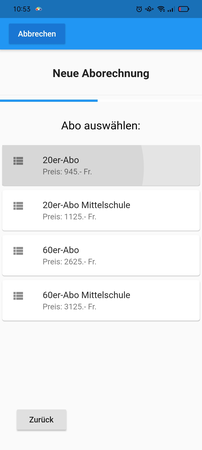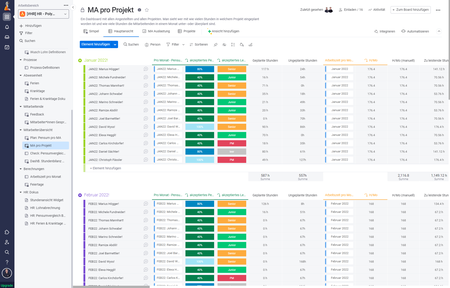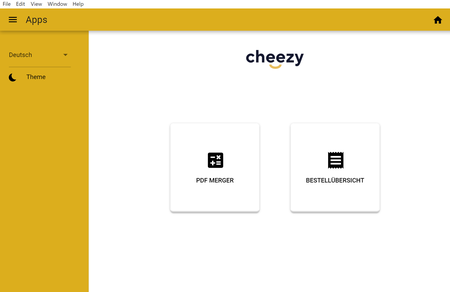Step-by-step digitalisation of companies
Digital transformation to paperless business through software development
We are digitalisation experts from Switzerland
Digitising a company is not an easy task. In order for digitalisation to succeed, it is important to tackle this process with competent help, who can ask the right questions and use the right tools. PolygonSoftware helps you with the digitalisation of your company in the following areas:
Selecting the right digitalisation software and organising the data
Digitalisation of any type of document, even of a complex nature
Introduction of a business management software
Identification of processes that can be digitised
Automation of processes by means of individually developed software
Developing interfaces between programmes


Our references in Step-by-step digitalisation of companies.

Through the use of modern technologies, companies can develop decisively in order to develop better services for their customers and deploy employees more efficiently. Digitalisation shows itself in different facets depending on the industry, company and service.
Advantages of digitalisation / digital transformation
A digitally positioned company enjoys important competitive advantages compared to traditionally structured companies. These include, for example:
- The ability for employees to continue working for the company at home or on the road.
- Improved business processes through software that guides employees through complex work steps.
- Fewer errors and miscommunications, as each employee has access to data relevant to him/her
- The ability to make important business decisions factually and rationally based on data.
- Automation of processes that take place only in the business data, without the intervention of employees.
Step-by-step digitalisation
We do not see digitalisation as a single huge action, but as an ongoing process. A company does not digitise itself in one project over a few weeks. Digitalisation happens step by step, first in isolated parts of the company, then step by step in larger parts.
Digitalisation should start in the company where there is the greatest need for optimisation. Particularly in areas of the company where a lot of repetitive work is required, where there is a lot of paperwork or where there is an acute lack of employees, a partial digitalisation offensive can improve the competitive success of a company with small tools.
Digitalisation step 1: Work in the cloud
The start of digitalisation for many companies is to obtain a business cloud, with the help of which employees can communicate, exchange data and collaborate. In most cases, it is a good idea to use an enterprise solution from established companies. For example, Microsoft Office365 offers the possibility to exchange files like OneDrive, to communicate via Teams and to work together on documents using Office Online.
In order to illustrate the process of digitalisation, we will take up a case study from the customer portfolio of PolygonSoftware from this point on. The Tutoring Lotus Academy has transformed itself into a completely digitalised company over the last 3 years. In step 1 of the company's digitalisation, Tutoring Lotusacademy set up a GoogleDrive for its teachers so that tutors could exchange files with each other and make teaching materials available to their students. their students.
Digitalisation step 2: Digialise data and documents.
A corporate cloud is only as useful as the data it contains. The second step in digitalisation is therefore to digitise data wherever possible or to store it only in digital format: paper invoices and contracts are scanned, telephone calls and meetings are logged, documents are not stored locally but only in the cloud.
The tutoring lotus academy has started to send invoices as PDFs by e-mail, to record telephone calls with parents of tutoring students in writing and to archive all documents in the cloud immediately. This has resulted in the tutoring students always having access to their invoices, teaching materials as well as agreed appointments via the cloud and there are fewer missed lessons or outstanding invoices. fewer cancellations of lessons or outstanding invoices.
Digitalisation step 3: Professionalise data storage
With increasing digitalisation of data and documents, one is confronted with a problem: Address data of customers pile up in various excel files, the folder structure in the cloud becomes confusing, in various files there are similar but contradictory situations and the question "Where is this file stored" or "Is this information still up to date here" comes up more and more often in the company chat. File chaos like "Addresslist1.docx", "Addresslist_new.docx" and "Addresslist_revised.docx" make digitalisation a pain. It is precisely at this digitalisation step that most companies fail and get stuck in a file and data chaos. Here it is usually worthwhile to get professional help from a software development partner. The information chaos is solved by business software such as Bambus Office Manager (BOM). These tools help to organise company data properly and link data together instead of entering it multiple times. Standard software such as Bambus Office Manager often offers a modular system in which employees can manage all data from customer addresses, financial accounting, current subscriptions or even their inventory without having to exchange huge Excel files. In most cases, tools like the BOM are flexible enough to store even complex data in a structured way.
The tutoring Lotusacademy relied on self-modelled databases for its digitalisation. For example, all students, teachers and parents at the tutoring lotus academy are stored in an address database, and planned or completed lessons are stored digitally, as are lesson purchases or invoices. You will not find Excel files filled with information at Tutoring Lotus Academy. At the same time, the relationships between the files are clearly modelled in the database: A tutor is linked to his/her tutoring students, the scheduled lessons to both student and teacher, the invoice to the student's parent, etc. An entered tutoring lesson is therefore automatically linked to both student and teacher and therefore does not need to be entered twice - if it is deleted by the student it is automatically removed for the teacher as well.
Digitalisation step 4: Digitise processes
As soon as data is available in a digital and, above all, structured form, one can begin to digitise processes. This means one thing above all: the recording of data must become as much a part of everyday life as its maintenance and use. Everyone must be able to rely on the correct recording and maintenance of data. For this step, it is often worthwhile to use small applications that define a process that supports employees in doing their work based on data and maintaining it. Since many processes are very individual for a business, it is also worthwhile in most cases to consult a software partner who will find the right standard software or develop individual software for you.
The tutoring lotus academy had employees of PolygonSoftware develop an app that digitises the processes of tutoring students and tutors. The app is used by students, teachers and employees of the tutoring school. Since then, the arrangement of tutoring lessons between students and teachers happens directly via the app between student and teacher. This not only allows students and teachers to plan, reschedule and organise appointments independently, but also enables the tutoring Lotusacademy to ensure that all lessons are entered correctly. This guarantees that the final accounting of the lessons, which takes place at the end of the month based on the lessons held, is always correct.
Digitalisation step 5: Automate processes
The more processes are digitised, the more you will be able to identify processes in which manual work only plays a minor role. Simple processes can be taken over by small programmes: The transfer of data into a system, the creation of regular reports or the administration of data according to certain rules. But even more complex processes, which until recently were difficult for computers to handle, are now often no longer a problem for computers via machine learning and AI. For example, intelligent software can use OCR to read even handwritten texts, interpret them and enter the relevant data into the system without human intervention. The complete automation of processes is almost always planned and programmed in close cooperation with a software partner like PolygonSoftware.
The tutoring Lotusacademy automated not only simple processes such as invoicing based on the tutoring lessons held, but also more complex tasks such as assigning the appropriate tutor for a new tutoring student. By analysing data such as the teacher's areas of expertise, the student's tutoring subject, the location of the two, the teacher's workload and many more, the app automatically suggests suitable tutors to the tutoring Lotusacademy staff for each new tutoring student, which then only need to be confirmed by the staff member. ".
Digitalisation step 6: Connect process interfaces.
In the last instance of digitalisation, one will encounter certain hurdles: Different software solutions used will have no to inadequate interfaces. There are countless examples of this: the accounting programme does not talk to the inventory programme, the timetabling software does not talk to the employee file, the web shop system does not talk to the post office to generate delivery labels. One finds oneself using staff hours to brittly transfer data from one system to another. This not only leads to inefficient man-hours, but also has great potential for error and results in information synchronisation between systems being sporadic. In most cases, these information interfaces can be overcome and automated through targeted programming of software.
The tutoring Lotusacademy optimised the interface between its own database, which contains information about the lessons held, and the accounting software, which has to convert the lessons held into a salary for the tutors and an invoice for the parents of the tutors. With this last step, the tutoring Lotusacademy has achieved a virtually completely digitalised business and can use the resources of its employees to further develop the business and innovate in the Swiss tutoring market!
Hey! Looking to digitally transform your business and automate processes? Check out my expertise in business digitalization!
I’ve helped companies streamline workflows, automate data handling, and implement custom software solutions. Here are some of my specialized areas:
- Data Structuring with AI – Organizing business information using large language models
- Automated Process Optimization – Enhancing efficiency through AI-driven decision-making
- AI in SMEs – My keynote talk on digital transformation for Swiss companies
Polygon Software shut down in 2024. If you're interested in collaborating on your business digitalization strategy, feel free to reach out! I currently work as a Senior AI Consultant at bbv and regularly speak at <a

